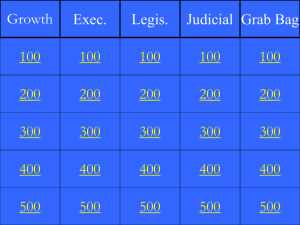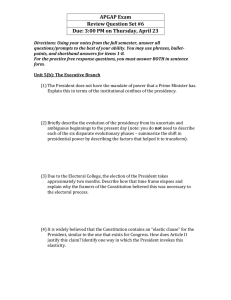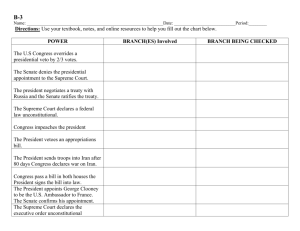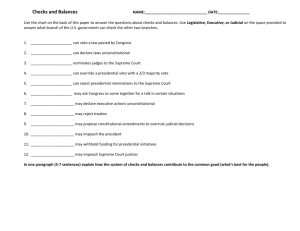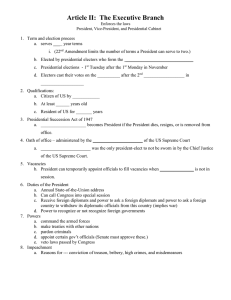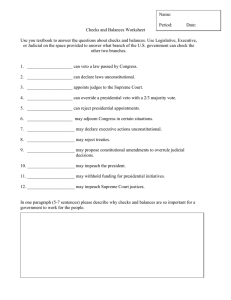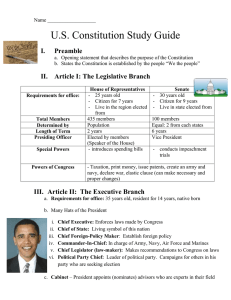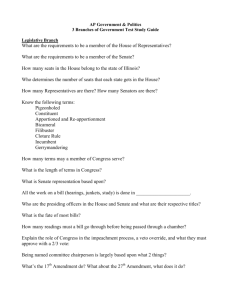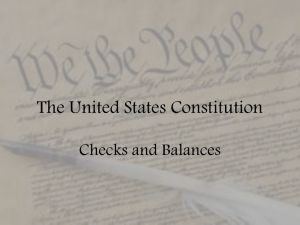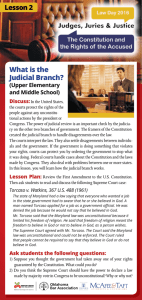American Government – Study Guide – Three Branches 1. Why did
advertisement
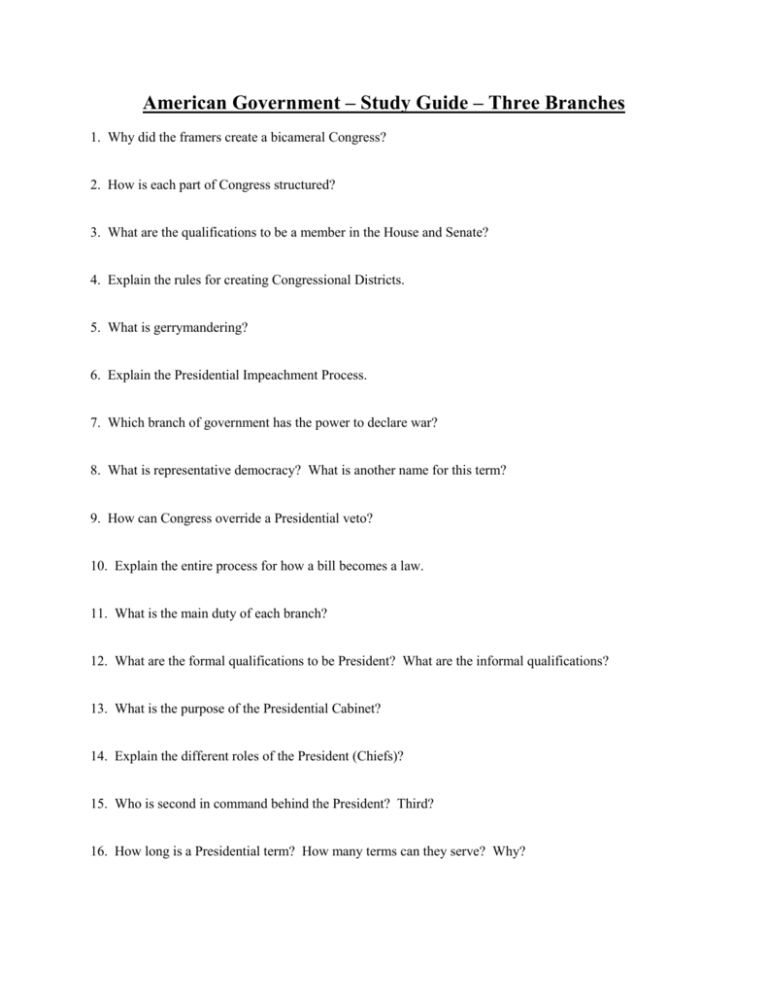
American Government – Study Guide – Three Branches 1. Why did the framers create a bicameral Congress? 2. How is each part of Congress structured? 3. What are the qualifications to be a member in the House and Senate? 4. Explain the rules for creating Congressional Districts. 5. What is gerrymandering? 6. Explain the Presidential Impeachment Process. 7. Which branch of government has the power to declare war? 8. What is representative democracy? What is another name for this term? 9. How can Congress override a Presidential veto? 10. Explain the entire process for how a bill becomes a law. 11. What is the main duty of each branch? 12. What are the formal qualifications to be President? What are the informal qualifications? 13. What is the purpose of the Presidential Cabinet? 14. Explain the different roles of the President (Chiefs)? 15. Who is second in command behind the President? Third? 16. How long is a Presidential term? How many terms can they serve? Why? 17. What part of the Constitution creates the Judicial Branch? 18. How are federal judges chosen? 19. What are the ways a case can make it to the Supreme Court? 20. How does the Supreme Court make a decision on a case? 21. What do we mean when we say the U.S. has a dual-court system? 22. What do appeals courts do when considering a case? 23. What is a majority opinion? Dissenting opinion? 24. Put these in correct order: Opinions Issued, Writ Issued, Oral Arguments, Brief Filed. 25. What is Judicial Review? 26. How can a federal judge be removed from office? 27. What happens to most cases appealed to Supreme Court? 28. Explain some ways in which federal courts gain jurisdiction over a case. 29. What is the purpose of the Bill of Rights? 30. What does equality in a democracy mean? 31. Explain the difference between duties and responsibilities. Examples of each? 32. Explain difference between New Jersey and Virginia Plan. 33. What were the Articles of Confederation?
